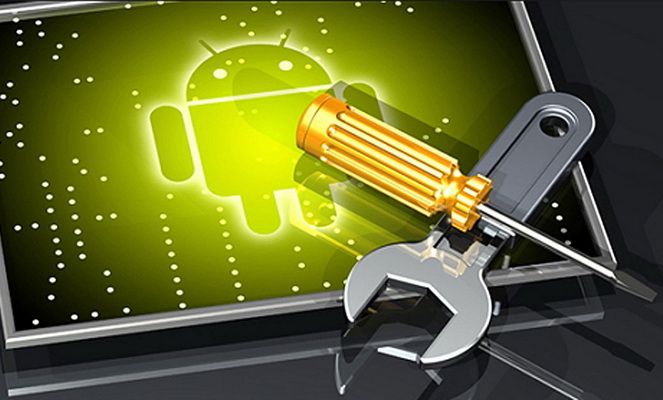Unlike users of the operating system Windows, who are the full-fledged owners of their devices, the owners of gadgets under control Android are content only with the capabilities that the developer has provided them. If the first is available to install any programs and chips in the form of fine tuning and modification of the OS, the latter are deprived of such rights. The system Android is unique in its own way, but its 'openness' is used only by software developers. The user does not want to put up with this, but root rights to Android help him get rid of the restrictions.

What is root on Android
By purchasing a smartphone or tablet under OS Android, the user gets a guest account, if we draw an analogy with Windows.
Gaining root rights is the process of activating a superuser account (akin to an administrator in Windows), which allows you to gain full control over the device and OS.
Root – translated from English 'root'. Hence the concept of accessroot. Root-rights to Android in Russian mean the right to access root folders and hidden OS features. The / ROOT folder contains all system files and settings. On a device out of the box, it is impossible to enter this directory using the built-in file manager. Manufacturers prudently strip users of root rights to avoid unintentionally disrupting the normal operation of devices.
However, the user often needs root access to Android. Superuser rights provide many benefits that go beyond what you would normally expect to use for gadgets. You can do almost anything with the operating system, and the device itself can be modified beyond recognition. This will be discussed further. But there are certain risks associated with the operation of getting a root. Therefore, before deciding, it is important to understand what is root for Android and why it is needed.
to the content
Why do you need root
The main purpose of rooting, or rooting, is to remove the manufacturer's prohibitions in order to be able to control system applications and functions. By themselves, root privileges do not change either the system or the devices, but they open access to the root system folder and allow you to use tools for editing previously closed files. These are usually special software applications or 'open' system functions.

Now, in more detail about what can be done with root rights to Android:
- Edit manufacturer-installed apps, shortcuts, themes, and block system alerts.
- Change the characteristics of the processors and system modules. You can overclock the processor (increase the frequency) and the battery or adjust the speed of the CPU cores, increase the speaker volume, install new functions on the camera, applications for creating screenshots and new fonts.
- Install programs that require root (emulators, drivers, etc.).
- Activate hidden OS functions.
- Install third-party firmware.
- Create backup copies of applications, transfer data and cache to a memory card.
- Block ads, send SMS or make calls to premium rates, as well as install dangerous software.
Of course, it is important to understand what root rights to Android are given and how to use such exceptional opportunities so as not to harm the gadget.
to the content
Root check
For various reasons, the user may need to check whether or not root was obtained on his device. There are two options:
- Manual.
- Program.
In the first case, a file manager is used, which will show traces of the presence of root. However, getting root access is not always accompanied by the installation of an additional administrator program, such as SuperSU, for example. In this case, special utilities come to the rescue, instantly indicating the presence or absence of root. In addition, this can be determined by indirect signs of the operation of the device itself.
to the content
Getting root rights to Android
There are a lot of working ways to get root. Among them there are both very simple and very complex, but there is no universal method for all versions Android (and there are almost seven of them today). Much depends on the specific device. In addition, root can be full or temporary. There is also Shell Root, when rights are granted without the ability to change the system partition.
So, the following options for rooting differ:
- By software. It is used either only Android, or a computer / laptop with OS Windows, on which special applications are installed.
- By installing, as a rule, custom (modified) firmware with built-in root.
The first method is the simplest, but it does not always guarantee the result. The fact is that manufacturers are struggling with the ability to gain access to the system.
The most reliable method for obtaining superuser rights is flashing.

to the content
Refusal of root rights
Failure to root can be useful for a variety of reasons. Very often, users are disappointed with the operation of the gadget after rooting. Sometimes a warranty repair is needed, and then you also have to give up root-rights. The same may be required when selling the device.
There are two ways to remove root:
- Manual.
- Program.
In the first case, everything is done using the file manager with the provided root. There are plenty of similar apps on Google Play. The task is solved radically – SuperSu.apk, .su and busybox files are removed from the system folders, without which root cannot work.
The same for the user can be done by a special utility, of which there are plenty in the same Google Play. The program is installed and launched, and the user only has to press the 'Remove root' button.
to the content
Pros and cons
Root rights to Android open up a new world for the user. We have already briefly discussed what opportunities open up after rooting. With a small degree of exaggeration, we can say that the user is equated with the developer of the operating system and can even control the hardware of his gadget.
Unfortunately, in addition to positive aspects, there are also very serious negative ones that make one think about the practical necessity of rutting. The fact is that the superuser mode on Android negatively affects some of the capabilities of both the system itself and the owner of the device. The cons of root are as follows:
- The ability to update firmware 'over the air' is lost.
- There is a risk of a virus taking control of the device.
- Some banking apps refuse to work.
- The manufacturer's warranty will be void.
